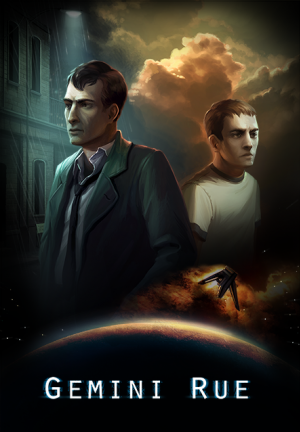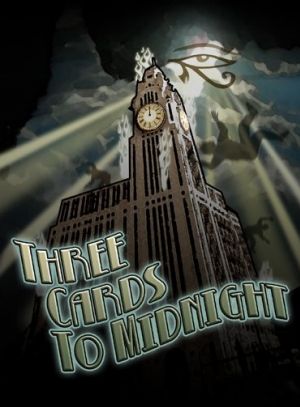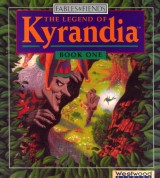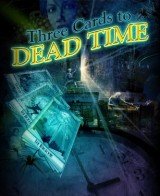Review for Gray Matter

Jane Jensen. If you're an adventure gamer, this is probably a name you know. For many fans, her name is almost as revered as Gabriel Knight, the character she created for one of Sierra's best-known series. A celebrated storyteller, Jensen has a reputation for designing games with rich narrative, complex characters, and strong ties to real-world history and settings. More recently, she's become known for her persistent drive to get her newest adventure game made—an odyssey that has taken seven years, two major publishers, two different developers, and numerous release delays. With this legacy comes added expectations, making Gray Matter extremely difficult to view objectively now that it's finally here. Yes, it's the first Jane Jensen adventure game in over a decade, and it does have a lot to like. But Gray Matter is far from perfect, and is plagued by too many unfortunate problems to be the "instant classic" Jensen's fans were hoping for.
Without question, Gray Matter's greatest asset is its story. Told across eight chapters with control alternating between two main characters, the story has all of the depth and complexity we've come to expect from Jensen's work. On the surface, it's a story that explores the elements shared by magic and science—a study of the limits of the mind. Deeper down, it's a story about two people in very different situations who are both learning to cope with terrible loss. It unfolds gradually, giving the player ample time to become immersed in the narrative, and some of its most memorable and touching moments are the points of connection that the characters unexpectedly share. All of the game's other issues aside, Jensen is still a masterful storyteller.
For the majority of the game, the player controls Samantha Everett, an amateur magician in her twenties. An American with a troubled childhood, Sam is an "ex-goth" with purple streaks in her hair, piercings, a tattoo, knee-high boots, and a tough, street-smart demeanor. Sam has her heart set on joining the Daedalus Club, an underground society for accomplished illusionists, and as Gray Matter opens, she's trying to get to London to visit the club when her motorcycle breaks down. In need of shelter, she impersonates an Oxford student to gain entry into Dread Hill House, the ominous residence of a reclusive scientist who needs an assistant. Initially she only plans to spend the night, but decides to keep up the charade—at first to make money, and later due to a growing attachment to her new employer and a developing fascination with the experiment he's conducting.
This employer, Dr. David Styles—a brilliant neurobiologist with a tragic past—is the game's second protagonist. Three years earlier, his wife Laura died in a fiery car crash. He became disfigured trying to save her and now hides his burns under a Phantom of the Opera-style mask. His emotional pain is not so easily hidden. In fact, the loss of his wife has become an obsession for David, who's convinced that he can make contact with Laura's spirit through a series of experiments related to psi energy (the brain's potential for psychic abilities). But this is David's personal project; his official experiment is a study of the effects of imagined physical activity on the brain, using Oxford students as subjects.
As David's research kicks off, inexplicable and dangerous phenomena begin to take place around the campus, at the same locations the students are instructed to visualize. Sam believes these stunts to be the work of a magician attempting to pull off a "grand game"—a public illusion intended to earn entry into the Daedalus Club. David, preoccupied with his psi experiments, is sure there's a rational explanation. What they go on to discover will shake both of their worldviews and force these unlikely partners to meet somewhere in the middle.
Gray Matter's 2.5D graphics are beautiful, if disappointingly static. The muted color palette, gothic touches around Dread Hill House, and classical architecture of several authentic Oxford landmarks all support the story's dramatic tone. The backgrounds are detailed and interesting to explore—particularly the sprawling Timmons Park and the whimsical Daedalus Club—and each location contains a fair number of hotspots, providing many opportunities to hear Sam and David comment on their surroundings. Though the 3D character models are also fairly well done, especially the main characters, they don't really get to show off their full potential due to a lack of animation and close-ups.
Animation isn't completely lacking; characters do engage in a sprinkling of habits such as checking a watch or running a hand through their hair. There are even a few conversations where special attention seems to have been paid to gesture and positioning (an encounter between David and a girl in the park comes to mind). But many of Gray Matter's lengthy exchanges take place with two characters sitting or standing still, arms at their sides, with no acting or motion to punctuate their lines. As a result, dialogue that's generally well written falls flat in its delivery, and some important story nuances are easily missed. In a particularly questionable design choice, if you choose to turn subtitles on, these appear at the bottom of the screen next to a creepy 3D head shot of the character speaking, with no facial animation beyond basic lip sync. These dialogue portraits amplify the game's overall lack of movement and are more distracting than useful.
Even when the dialogue suggests that a character should be doing something, they'll sometimes stand there like statues. For example, at one point Sam, positioned a few feet away from the kitchen table, is offered a breakfast plate by the housekeeper. After several minutes of conversation, Sam says, "That was the best, thank you"—yet she has not moved from her spot, and the plate on the table has not changed. Even worse, some animations—such as David rifling through a nightstand drawer—are completely wasted by virtue of the background not supporting the action. (In this particular case, the drawer is closed, with David's hands visibly groping the air in front of it.) Interactions with other characters or the environment are often dodgy as well, with David reaching well below a desk's surface to pick up the phone or Sam's hand hovering far above a shopkeeper's as she passes him some invisible money. (Maybe she's paying by magic!) Though these are small gripes in the grand scheme, they add up to make Gray Matter feel incomplete and sloppy, exposing the seams on what otherwise would be a wholly engrossing story.
The lack of animation carries over in Gray Matter's dozen or so cinematics, but in this case it's on purpose. The cutscenes are very different than the in-game graphics, with a stylized effect that's a cross between a graphic novel illustration and a watercolor painting. Appearing mostly at the beginnings and ends of chapters, such scenes are meant to convey sweeping story points, but with minimal animation and no lip sync, these stills feel out of place in a Jane Jensen epic. Additionally, several characters look quite different in the cinematics than their in-game counterparts, which can make the movies hard to follow. Budget may have been an issue and these cutscenes are certainly better than nothing, but they often miss their mark, particularly considering the dramatic story moments they're meant to communicate.
Gray Matter's interface is straightforward point-and-click, with the option to double-click to run or exit screens automatically. The inventory is hidden at the top of the screen until you mouse over it, at which point left-clicking an inventory item prompts Sam or David to comment on it, while right-clicking selects it for use. In addition to the items they acquire, each character carries a diary that lets you review dialogue and re-watch cutscenes. Though this is a nice feature, it's poorly implemented. The diaries have tabs to navigate from chapter to chapter, but to find a specific comment you have to click through each page within a chapter, which is tedious enough to make it impractical. Also, since control alternates between Sam and David, when you're controlling either one of them you can only review dialogue and cutscenes from that character's chapters. Naturally, the few times I really wanted to use this feature, the information I sought was in the other character's diary.
Only 20 save slots are available, which seemed like a lot until I ran out in chapter five, and each saved game notes your total accrued playtime. For me, Gray Matter took about 12 hours to complete, which is pretty beefy for an adventure game these days. In such a big game, it's inevitable that you'll sometimes be unsure about what to do next, but Gray Matter has a few tools to help with this. Its multi-themed story makes this adventure somewhat non-linear, with each chapter having five or six different areas of focus. For example, some of Sam's divergent objectives in the first chapter are to learn more about Dread Hill House, to find out if the Daedalus Club has a presence in Oxford, and to recruit students to join David's experiment. Progress bars show the percentage completed for each of these objectives, and at points when I wasn't sure what to do, consulting these helped. Each chapter also has a "bonus" slider that encourages you to look at everything and exhaust all possible dialogue, but from what I could tell there's no payoff for doing so beyond personal satisfaction.
On the quick travel map, locations display in gold if there are main tasks to complete there, in silver if there are optional tasks, and in gray once you've done all there is to do. Early on I wasn't sure if I was looking at silver or gray, but once I caught on to the color scheme this proved to be a useful way to rule out locations when I was closing in on the end of a chapter. In another helpful feature, pressing the space bar displays all of a room's hotspots, although this sometimes responds sluggishly and sometimes not at all.
In general, Gray Matter's gameplay is well integrated into the story. To recruit students for the experiment, Sam uses a combination of dialogue, inventory items, and her skills as a magician. Later on, controlling David, the player must locate items around Dread Hill House that will help him see, hear, touch, taste, and smell the setting of an intimate memory he shared with his wife. Both characters use computers for tasks that include simple research and image manipulation—nothing as complex as Gabriel Knight's SIDNEY, but it lends a taste of realism to the game's academic setting. Organic gameplay like this keeps Gray Matter's unfolding story front and center, although the pacing sometimes drags (especially in the first two chapters).
On top of this traditional story-driven gameplay, Gray Matter has a few experimental bits—some more successful than others. When she's faced with the challenge of sneaking an item away from someone or breaking into a room, Sam naturally gravitates to magic tricks. In theory this seems like a great opportunity for "outside the box" gameplay. In practice, the tricks often feel shoehorned in, and their execution requires little thought from the player. Sam carries a magic book that conveniently contains directions for every trick she ends up having to do during the game (and only those tricks). The book itself is pretty cheesy, with the trick descriptions reading as if they were written specifically for those moments in the game, rather than being legitimate source material that Sam must creatively apply to the situations she's in.
To perform a magic trick, you select the book and page through it to choose the appropriate trick. The game won't let you try the wrong trick on someone, which makes this little more than a practice in trial-and-error. Once Sam has decided which trick to perform, you drag items into her hands or up her sleeves to repeat the steps in the book one by one. (Some tricks require props stocked by a local magic shop, but you're only ever able to buy the supplies that go with tricks you're predestined to soon perform, again requiring little thought.) After you've set up all of the steps, you click a button to make Sam perform the trick—at least, that's supposedly what happens. Usually she says something like "I did it!" or the victim reacts as if she did something, when in reality the two of them stand there with nothing visibly happening. A short cutscene at the end of this process would at least have provided some payoff to an otherwise tedious exercise. Instead, I was often left wondering why Sam couldn't have taken a less circuitous route to get what she wanted.
The Daedalus Club riddles that send Sam around Oxford on a massive scavenger hunt are more successful. Sam gets these riddles from the magic shop, and solving them brings her closer to uncovering the club's secret location. The riddles are a far cry from Jensen's famed "Le Serpent Rouge" puzzle, but they require the same type of brainpower and provide a nice break when the pace starts to drag. Another sequence of note is an interactive hypnosis session that David undergoes while trying to recover repressed memories related to his accident. Rather than simply watching a cutscene, the player gets to make choices to help draw out his memories. It's a nice experiment in interactive narrative, and a type of gameplay I hope we'll see more of from Jensen down the road. And though I don't want to spoil anything by describing them, I will say I really enjoyed the series of imaginative logic puzzles that Sam faces in the last chapter—it's a "grand game" that takes Gray Matter's climax in a refreshing new direction.
Overall, the difficulty level was just right for me. A handful of puzzles had me stumped for a few minutes, but there was nothing I couldn't figure out on my own. The only times I got really stuck, it was because I'd missed a hotspot or minor interaction that triggered the next scene. In fact, this is one thing Gray Matter gets very wrong. There are far too many instances of the game artificially progressing—or failing to progress—based on the assumption that the player will look at items or visit locations in a specific order. At one point, a confrontation between Sam and another character triggered before she'd received the phone call that laid the foundation for the argument, simply because I'd chosen to zip to a location using the map rather than leaving Dread Hill House through the front door. But the worst example had to be when Sam refused to mess around with a fuse box she obviously needed to use, yet the only way to proceed was by inexplicably doing something that her own comments implied would be worthless to try.
Gray Matter's atmospheric music is capably composed by Robert Holmes, who also wrote the Gabriel Knight scores and is Jane Jensen's husband. The soundtrack is a mix of brooding instrumentals (some of which sound very similar to GK's themes, in a good way) and vocal tracks by The Scarlet Furies, an indie band in which Holmes and his daughter perform. While all of the music is good, the evocative melodies and haunting vocals of The Scarlet Furies songs stand out the most—in fact, I'm still humming the lead track, "Safe in Arms," a week later. In spite of an awkward instance of product placement, when David recalls listening to their CD with Laura, I liked the band's inclusion and hope that Gray Matter brings them some new recognition.
Voice performances range from excellent to awful. David, played by British television and stage actor Steven Pacey, is the best of the bunch, skillfully conveying a gamut of emotion: from depression over losing his wife to excitement over the possibility of contacting her; from annoyance over Sam's early work to a developing concern for her well-being. Sam, played by Philippa Alexander, is a close second, although some of her lines are a tad too enthusiastic for her jaded persona. ("The Daedalus Club London! I will get there!") The students in David's experiment, who appear in a good portion of the game, are a mixed bag; the reserved Angela and Charles are believable, while the outgoing Helena and Harvey are annoyingly over-the-top. In general the rest of the cast, most of them British, sounded fine to my American ears.
With its designer's acclaimed pedigree and the long wait for the game to materialize, Gray Matter had very high expectations to meet. Fortunately, it is indeed a good game with an excellent story, even if the Jane Jensen name can't make up for the numerous shortcomings in its presentation. It also sets the stage nicely for future adventures with Sam and David, which Jensen has expressed as a goal all along. If you're a fan of her previous work, by all means play it—just set those expectations a little lower. Even if you're not familiar with Jensen's earlier games, this game is recommended for those who like dramatic adventures that focus on story and character. It may not match the legacy that came before it, but Gray Matter still holds its own among today's releases. More importantly, it's a step in the right direction. For a long time, Gabriel Knight 3 seemed destined to be a talented designer's swan song. Now that Gray Matter is finally a reality—imperfections and all—adventure fans can be much more confident that we haven't seen the last of Jane Jensen.






















